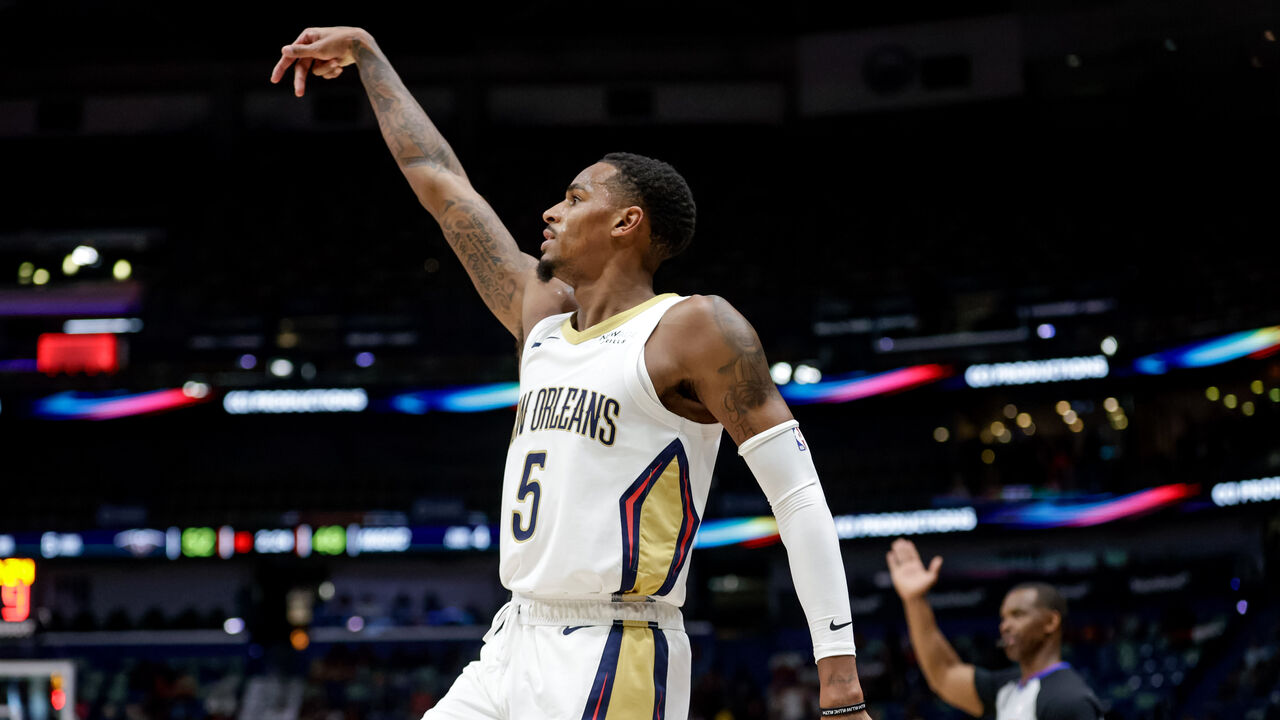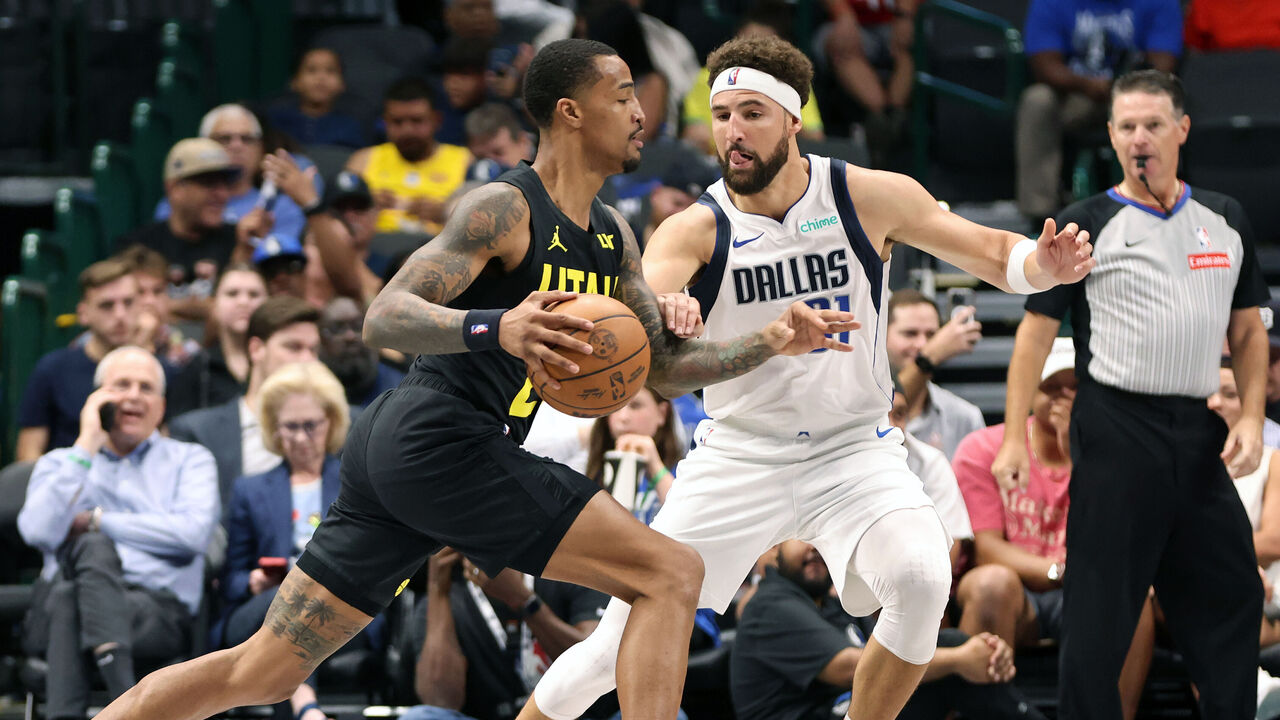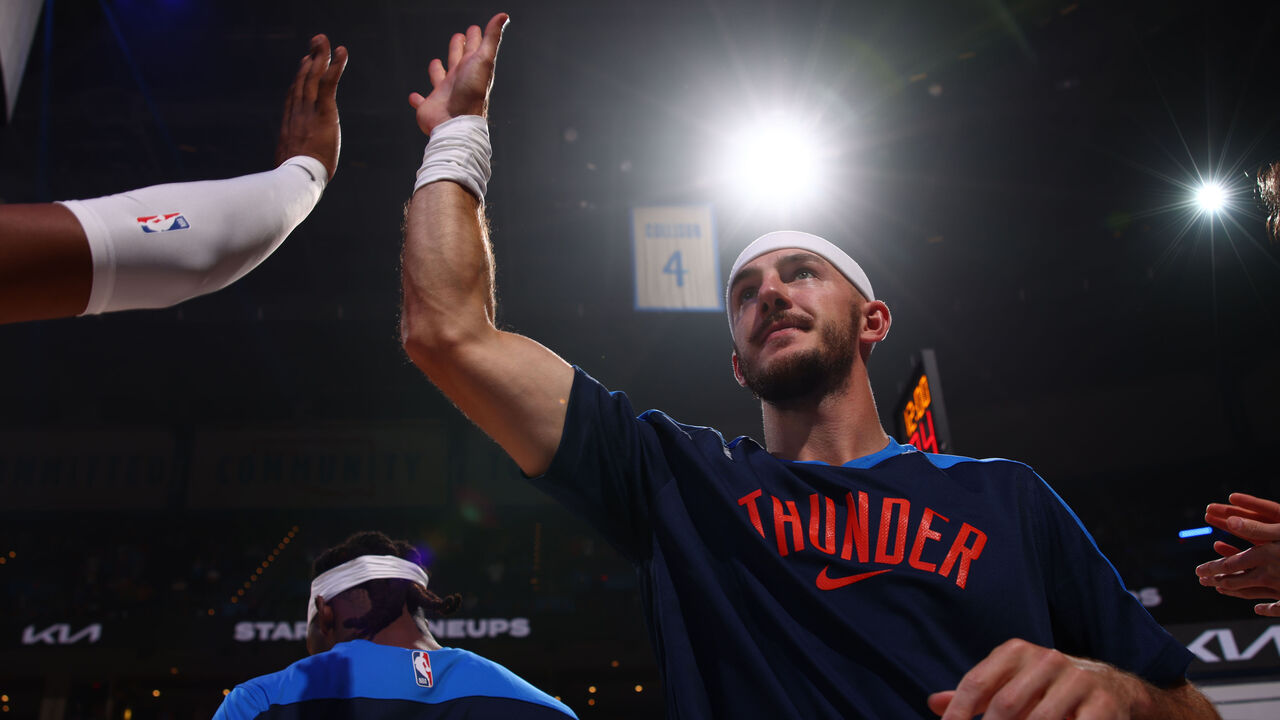The biggest questions facing the NBA's biggest offseason additions
The 2024-25 season is about to begin, and as is the case every year, there are a handful of new faces in new places. A lot is riding on how harmonious the new marriages turn out to be. Here are the biggest questions facing some of the offseason's biggest acquisitions.
(Note: This feature excludes Karl-Anthony Towns and Julius Randle, since we addressed many of the questions about how they'll impact their new teams here and here.)
Paul George, 76ers

How much will he benefit from a scaled-down offensive role?
George is stepping into a role that he hasn't played since his second season in the league some 13 years ago: When the Sixers are healthy, he'll be their third option on offense. You could argue he played that part on last year's Clippers after they acquired James Harden, but despite spending less time with the ball in his hands, George had a significantly higher usage rate than Harden did. This year, he'll undoubtedly have less offensive responsibility than Joel Embiid and Tyrese Maxey.
Still, last season can be instructive in terms of what George might look like on a team with two superior creators. Alongside Harden and Kawhi Leonard, he had the most efficient scoring season of his career in terms of true shooting (61.3%), which included hitting over 45% of his catch-and-shoot threes. He ironed out a longtime kink in his game by posting his lowest turnover rate since his rookie season (just three per 100 possessions), and he enjoyed his healthiest season in five years. A tertiary role feels pretty ideal for the 34-year-old at this stage of his career.
The question isn't whether George can complement the dynamic Maxey-Embiid duo - it's how good he can be while doing it. How quickly can he adapt to the specific movement rhythms that come with orbiting Embiid, a type of post operator he's never played with before? George's rim frequency has been declining (last year's 20% attempt rate was the second-lowest of his career), but does he still have the juice to get to the hoop consistently when he's driving closeouts or plunging into diagonal gaps off stampede cuts? Will a reduced offensive workload allow him to extend his run as an impact defender, considering what Philly will ask of him physically as a nominal 4 in most lineups?
Perhaps the most important question: Will the lessened responsibilities help George loosen up in the postseason? Even if the extent of his springtime woes can be overstated (he was a playoff monster with the Indiana Pacers, as well as during the Clippers' 2021 conference finals run), he's had no shortage of high-profile letdowns. There's a fine line between deference and passivity, and George will have to walk that tightrope in one of the most important seasons of his career.
DeMar DeRozan, Kings

Can he fit with the Kings' motion-based offense?
Sacramento's breakneck offense took the NBA by storm in 2022-23, running defenses ragged in the open floor and spinning them in circles in the half court with a cyclone of dribble-handoffs, cuts, and off-ball screens. The Kings led the league in offensive rating that season en route to snapping their 17-year playoff drought. But despite having basically identical personnel and principles last season, they slid all the way to 13th.
On paper, the formerly wing-starved Kings should ascend the league's offensive pecking order again after adding a six-time All-Star wing who averaged 24 points on above-average efficiency, dished 5.3 assists to just 1.7 turnovers, and finished runner-up in Clutch Player of the Year voting last season. But the game isn't played on paper, and DeRozan has to show he can fit into a movement-oriented system that already features two heavy-usage creators in De'Aaron Fox and Domantas Sabonis.
DeRzozan's a terrific on-ball creator in his own right, and at times, Sacramento will rely on his ability to manufacture buckets out of thin air against a set defense. He's an underrated passer who'll create high-value shots for teammates. While he's played for slow-paced teams in recent years, he's always been a killer in transition. And his mid-range shooting and free-throw-drawing abilities will be boons to a team that finished 20th and 26th in those categories last season. In other words, there are a lot of ways he can be helpful, even if/when he's playing outside Sacramento's typical flow. A stylistic changeup might even benefit the Kings given how the rest of the league caught up to their fastball last year.
That said, DeRozan needs to find a way to fit around Sacramento's other two stars (both of whom are better than him), which will require a lot of adaptation. His off-ball utility is inherently limited by his lack of 3-point shooting, and he's never quite done enough as a cutter or screener to compensate. It's one thing to sprint into a handoff or a curl (which DeRozan will do plenty), and another to sow confusion or divert help on the weak side when there's no guarantee he'll touch the ball. It's one thing to be a playmaker via probing drive-and-kicks, and another to make rapid connective passes rather than catching, surveying, and dribbling in place. The Kings as a team averaged just 5.6 isolation possessions per game (fifth-fewest in the league) last season; DeRozan alone averaged 3.6.
He'll also need to sort out the crunch-time hierarchy with Fox (who won the inaugural Clutch Player award two years ago), lest the Kings' late-game offense devolve into a your-turn, my-turn tug-of-war. All of these offensive questions are essential because adding DeRozan will likely pull down Sacramento's defense after it quietly improved to league average last season.
Dejounte Murray, Pelicans

How well can he complement Zion?
Like DeRozan, Murray is a ball-in-hand type of player joining a team with multiple other touch-needy stars. As the Pelicans' nominal point guard, Murray will have license to bring the ball up and initiate possessions more often than not. But he'll still need to defer to Brandon Ingram and Zion Williamson and figure out how to make life easier for those guys when he doesn't have the ball.
Since Ingram is on an expiring contract and New Orleans spent the offseason trying to trade him, it's fair to assume he's not part of the team's long-term vision, so complementing Williamson is a far more important consideration for Murray. That's something he could never really do for Trae Young in Atlanta. Across the pair's two seasons together, the Hawks were outscored by 2.6 points per 100 possessions with both of them on the floor - significantly worse than they performed when either guard played without the other, per PBP Stats.
Williamson's obviously a much different - and far less ball-dominant - player than Young, but Murray can still learn from what didn't work in Atlanta. Namely, he needs to amp up his activity level; he stood around way too much when Young had the ball. Murray can make Williamson's life easier by creating initial advantages that provide his co-star with play-finishing opportunities, but Williamson will also serve as a de facto point center a lot of the time. That means Murray needs to cut and relocate to provide Williamson with easy passing outlets when the defense collapses on him. It might also mean being a ball-screener in inverted actions, especially when he and Williamson are on the floor without CJ McCollum.
One reason for optimism is that Murray leveled up as a 3-point shooter during his Hawks tenure; he went from shooting 32.7% on 4.3 attempts per game in his last season in San Antonio to shooting 36.3% on 7.1 attempts last year in Atlanta. He was especially solid off the catch, hitting 39.2% of those 3-point looks compared to 32% off the dribble. After a season in which he took an almost equal share of pull-ups and spot-ups, it would behoove him (and the Pelicans) to focus more on the latter. And as a virtually unparalleled downhill force with massive on-ball gravitational pull, Williamson should be able to create more clean catch-and-shoot looks for Murray than Young did.
Klay Thompson, Mavericks

How much defensive juice does he have left?
Thompson has a chance to supercharge the high-powered Dallas offense, providing a wicked off-ball complement to the best tandem of on-ball creators in the game. But playing next to Luka Doncic and Kyrie Irving also means taking on a lot of defensive responsibility, especially when the guy you're functionally replacing in the starting lineup (Derrick Jones Jr.) was the Mavs' No. 1 perimeter stopper - and a strong secondary rim-protector at that.
During his Hall of Fame-caliber peak, Thompson was a quality defender at three or sometimes four different positions. As age and lower-body injuries have caught up to the now-34-year-old, that range of capabilities has been winnowed down to average defense at one-and-a-half positions. And the types of players he's currently capable of guarding (slower wings and smaller 4s) are the same types that the Mavs like to assign to Doncic.
P.J. Washington has shown he can handle some 3s, and Doncic and Irving played some of the best defense of their careers en route to the Finals last spring, but certain matchups will still demand a lot from Thompson on the perimeter. Although he obviously won't be up to Jones' defensive level, just being competent should keep him on the floor in crunch time given how good the offense can be with him out there.
If he can't clear that bar, Dallas has the option to use Naji Marshall in those closing lineups instead. That's pretty reassuring in terms of worst-case scenarios, but the Mavericks' ceiling feels a lot higher if Thompson can still defend well enough to consistently play in high-leverage situations.
Alex Caruso, Thunder

Can he beat (or discourage) cross-matches?
Caruso's biggest selling point is obviously his capabilities at the defensive end, where he's arguably the best, stickiest-handed guard in the game. He joins a team that just finished second in defensive efficiency and opponent turnover rate without him. There are zero questions about his fit on that side of the ball.
It was the Thunder's offense that let them down in the playoffs - they mustered just 110.9 points per 100 possessions, down from 118.3 during the regular season - and that's where the intricacies of exchanging Josh Giddey for Caruso become more interesting. Giddey was a vastly superior ball-handler and passer, but his shooting struggles made him borderline unplayable in the second round as the Mavs cross-matched their centers onto him and kept those centers parked in the lane.
Oklahoma City's addition of non-shooting center Isaiah Hartenstein will render the cross-match moot when he's on the floor - opposing centers will simply guard Hartenstein. When the Thunder look to go smaller with Chet Holmgren at the 5, however, Caruso's viability as part of those lineups may depend on whether he can make that coverage less tenable for opponents. Caruso shot 41% from deep last year and nets out at 38% for his career, but he's never been a high-volume 3-point shooter, and his accuracy has fluctuated wildly from season to season.
Defenses don't necessarily pay attention to raw percentages when they're deciding who to roam off of, especially when choosing between letting a role player shoot or letting a guy like Shai Gilgeous-Alexander drive the ball without aggressive help. A player's willingness to shoot, their versatility, and their release speed are more important considerations. Just ask Herb Jones (who shot 42% from three last season) or Isaac Okoro (who shot 39%) if their strong conversion rates changed the way playoff opponents reacted to them. Heck, when the Thunder pulled Giddey in the Dallas series, the Mavs were happy enough to move their centers onto 39% 3-point shooter Lu Dort.
Caruso isn't the most willing or versatile shooter, but the Thunder will hope he can burn defenses that deign to cross-match him - not just by knocking down enough of his open looks, but also by involving himself as a screener (something Giddey wasn't particularly adept at). Caruso is the rare guard who will roll as often as he pops out of a ball screen, and myriad inverted pick-and-roll reps alongside LeBron James and DeMar DeRozan have helped him become a solid short-roll playmaker. That skill set should dovetail nicely with the Thunder's proclivity for small-small screening actions.
Joe Wolfond covers the NBA for theScore.
HEADLINES
- Report: Suns trade 2031 1st-rounder to Jazz for 3 future picks
- Jokic records 19th triple-double of season, Nuggets blast 76ers
- Risacher out at least 1 more week with strained adductor
- NBA MVP Rankings: SGA in pole position for silverware
- LeBron becomes 2nd 40-year-old with triple-double, Lakers beat Wizards